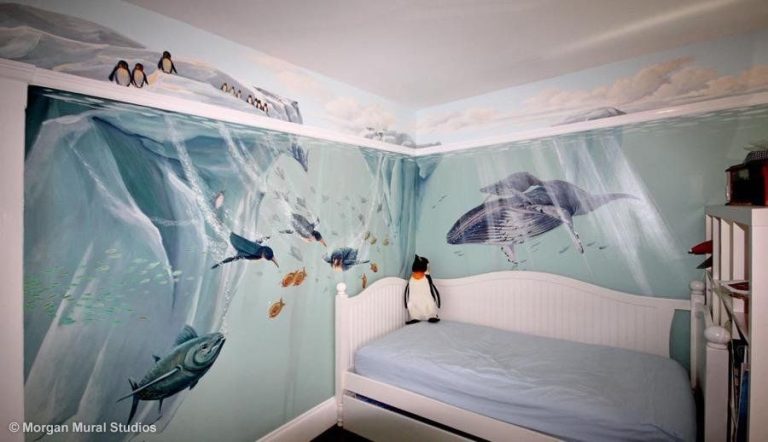Morganangelo and the Stanza della Segnatura – My Ceiling Art Strategies
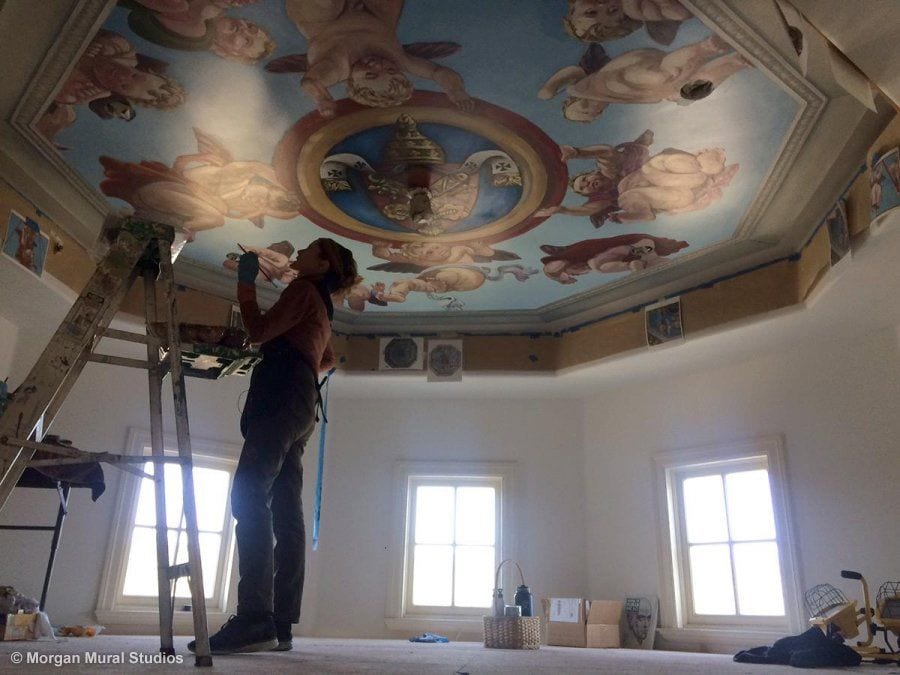
I recently took on three successive ceiling art projects, about two months of work. I realized my plan might be over ambitious when I turned around and tried to find an assistant to help me and discovered that many of the artists I know won’t work on ceiling projects because it is so hard on the body.

Painting ceilings captures our collective imaginations. It conjures up images of Michelangelo straining in the cold and damp Sistine Chapel by candlelight, suffering over his ceiling project for four years. By the dismal sonnet he wrote about his work on painting the chapel ceiling, it’s clear he was under physical strain and mental duress, and did not enjoy the work.
I had no intention of being cavalier about the physicality of the endeavor I was undertaking. I planned to incorporate every tip and trick I knew of to make the ceiling work a happy experience. If you are considering painting your dining room ceiling to look like a renaissance masterpiece, or just curious, read on for my best tips for making it through your decorative ceiling project with your head on straight.
It may sound unromantic and not very creative, but when painting a ceiling, efficiency is key. You want to spend more time planning (and have all the details clear with the client) to save time on puttering, false starts and re-do’s. I like to have conversations with my clients on a daily basis about the progress so that there are no surprises midway along. I am at a great advantage in this regard over Michelangelo, who had a hard time getting a regular audience with the pope.
A few other ways that Michelangelo’s ceiling masterpiece is different from mine:
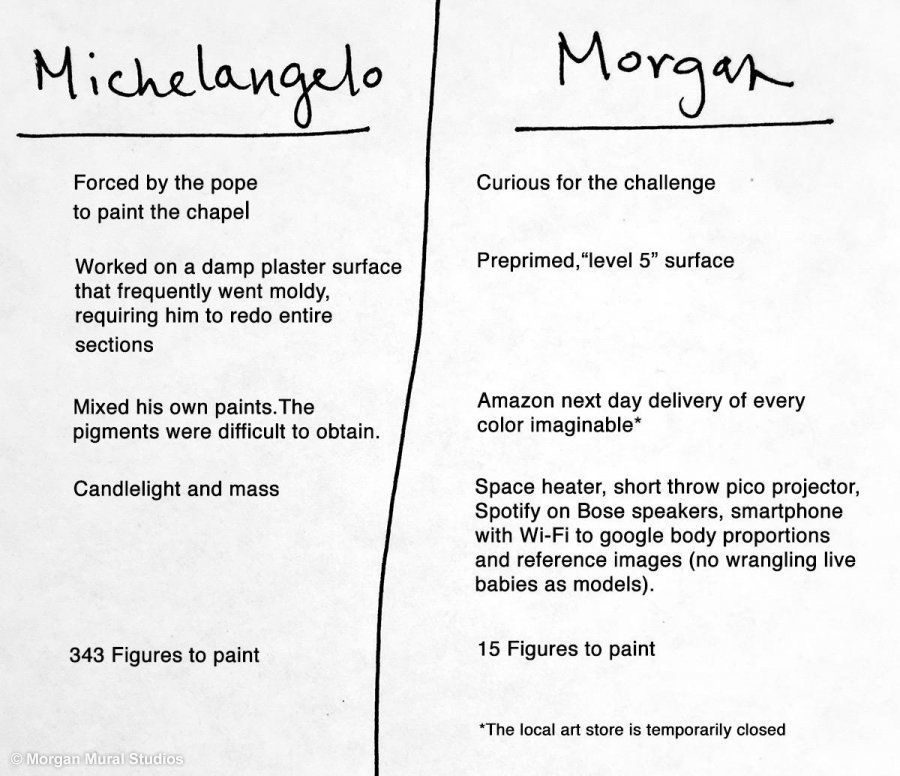
Michelangelo took four years to paint the Sistine Chapel but not because he was a slow painter. He faced chronic inefficiencies. He painted “God in the act of Creation,” his most iconic scene, in a single day.
For those of you considering a longer project, here are my top three hacks for staying healthy while ceiling painting:
- Work short days. It goes against my workaholic tendencies, but I paint a maximum of 5 hours a day when I am working on ceilings. I never quite figured out the four-hour workweek, but once I get past the guilt, I am absolutely enjoying the five hour workday. There is plenty of time in the afternoons for icing my shoulder, massage, yoga or a nap. I don’t leave work exhausted. What a revelation.
- Set a timer. I set a timer every 45 minutes to take a 15-minute break. Imagine that you are in the middle of a video game, puzzle, or line of code, absorbed in the challenge and suddenly, time to stop. I am never ready to put down my brushes. I haven’t fully mastered this one, but I know it is key. As my mother used to say, “Do as I say and not as I do.”
- Wear a neck support. Yes, people will look terribly worried and ask you if you were in a car accident, but a medical neck stabilizer is great. Even less attractive but more supportive is the Neck Aid, which provides a shelf for the back of your head to rest on. It hooks onto your pants and behaves like a pair of over-ambitious suspenders. You might be mistaken for a relative of Mr. Bean.
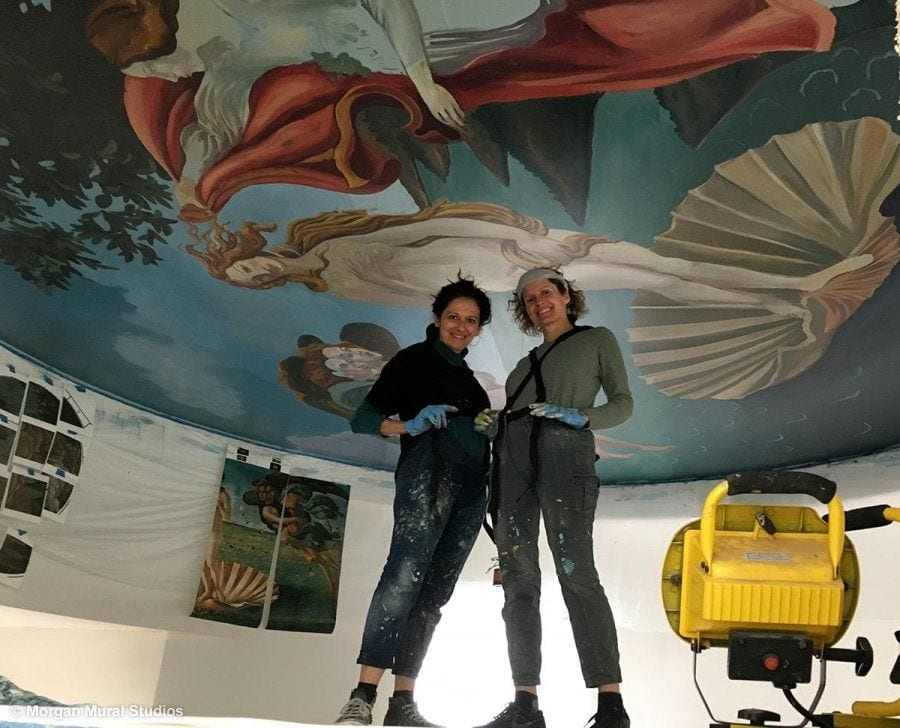
For my ceiling ambitions, I did find a willing assistant. Actually, more like a willing teacher. This is the third time Chiara Spataro has come from Italy to paint with me. This time I flew this trompe l’oeil maestro over for a whole month to work on two Italian renaissance ceilings with me. I always start out telling Chiara how I want something done, then say, “Wait, how would you do it?” Without fail, I learn something new and it turns out beautiful.
I recently read Walter Isaacson’s book on Leonardo da Vinci, and learned that in renaissance Italy artists worked collaboratively at an atelier. There wasn’t any personal assignation to a work, and usually many different artisans worked on any given painting. When I started the Stanza della Segnatura ceiling mural, I noticed a big difference in quality and style of the dozen cherubs. The work is attributed to Raphael, and some of the putti are truly sublime. Other putti were clearly assigned to the newest apprentice. I am doing my best to capture the essence of the artwork, but on a few of the putti I took the liberty of making changes. You can see in the progress photo below, the cherub in purple has recovered some modesty, and I removed the “football tackle” cherub on his right altogether.
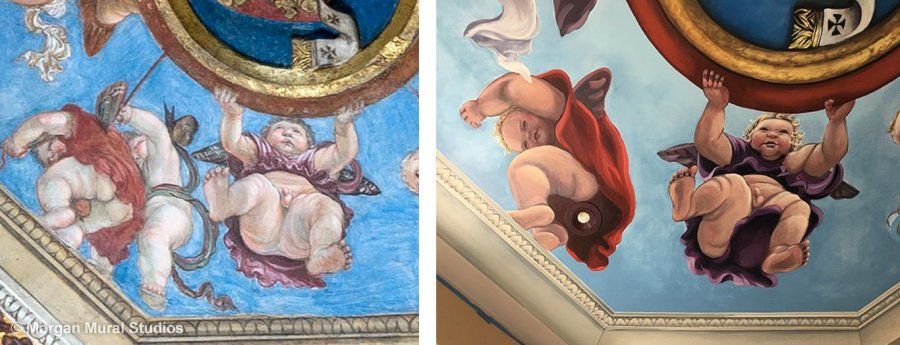
Chiara is taking care of of every aspect of the ceiling except the cherubs. Her work looks effortlessly flawless. Meanwhile, I am struggling through 60 toes, 82 fingers and 10 chins. I think I deserve extra credit for the double chins. Today, I worked on making the two suspicious characters in the corner look a little less threatening.
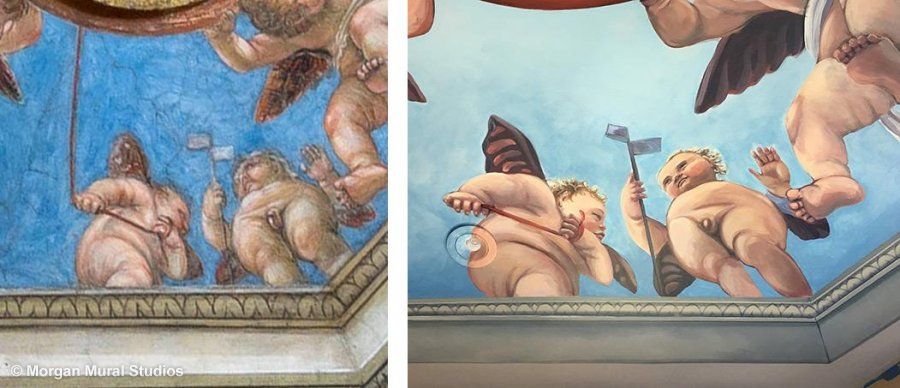
My chiropractor pointed out that most of his patients suffer from neck ailments related to hunching over their devices, and I face the opposite challenge. It sounds to me like painting ceilings would be the perfect theraputic hobby for smartphone addicts.
Think of all the putti waiting to be born!
Ciao,
![]()



